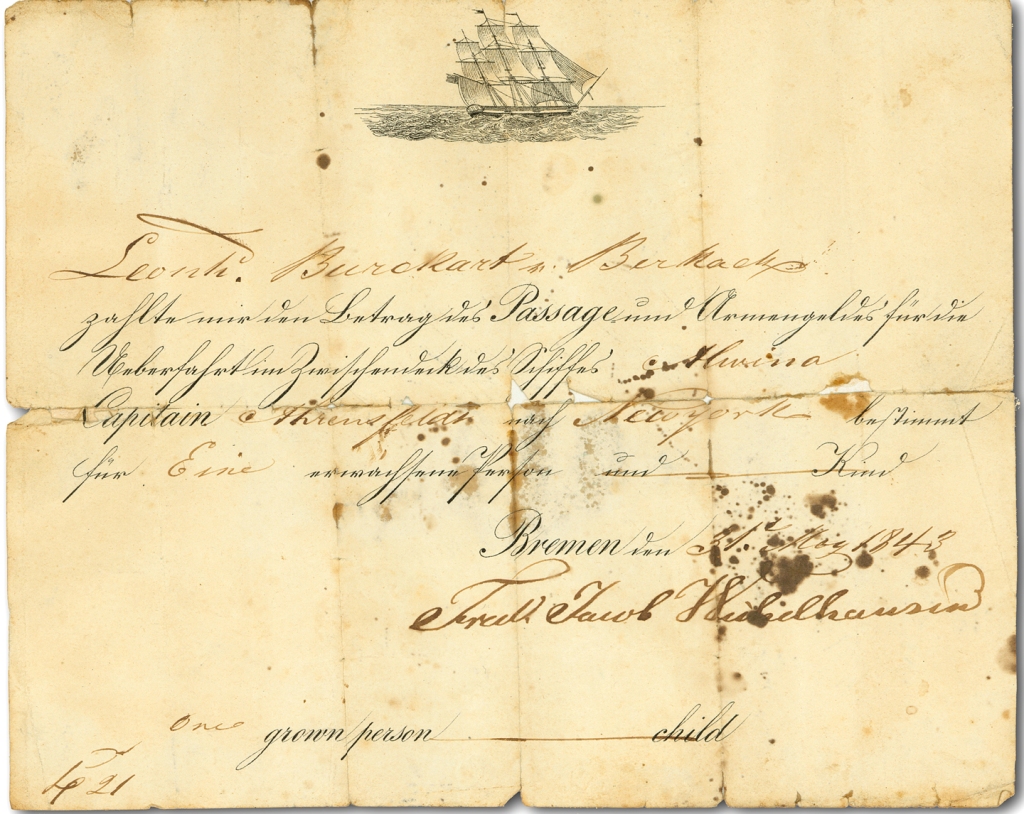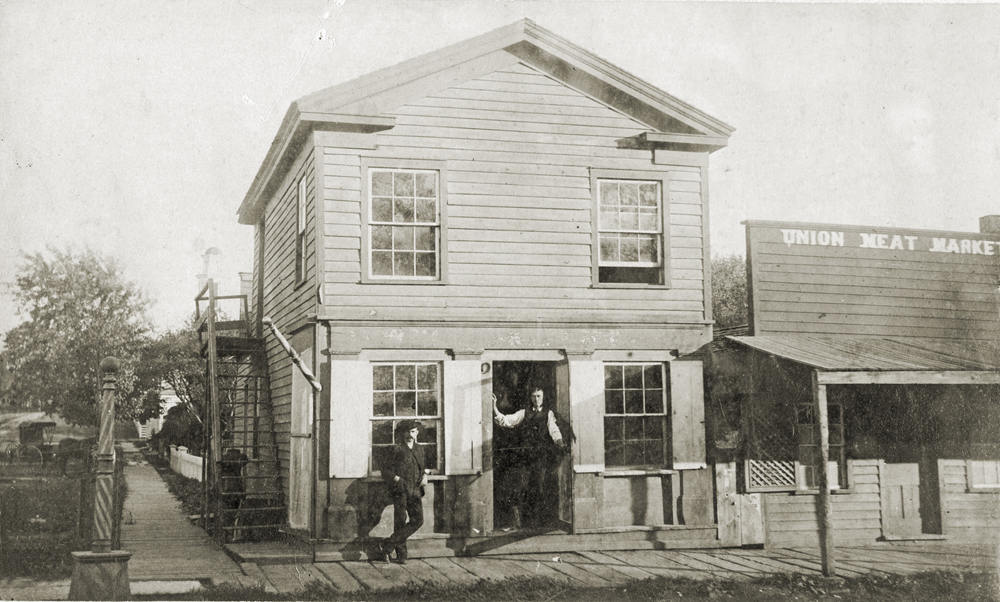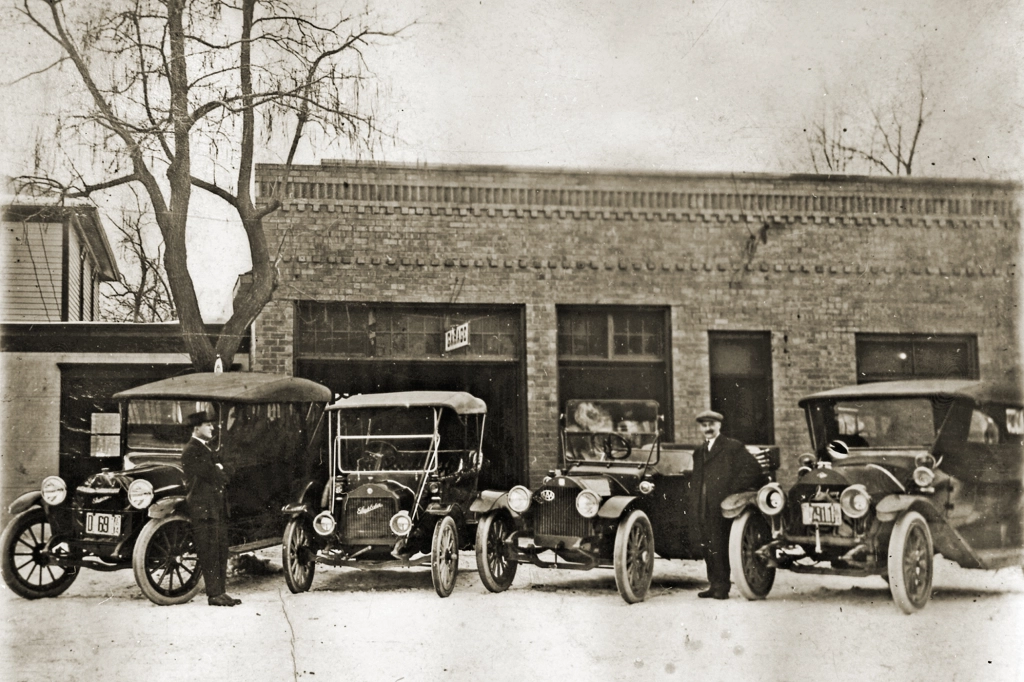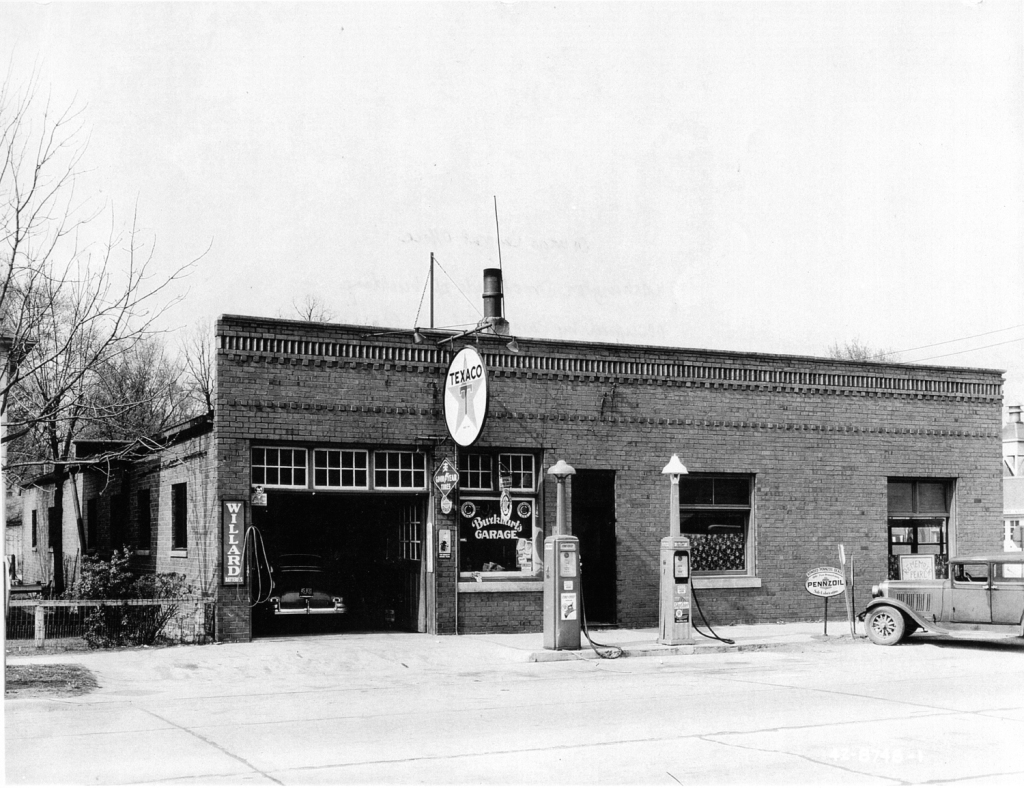Between 1840 and 1858 seven of the nine living children of Johann Leonhard Burkhart immigrated to the United States from Birkach, Bavaria
Initially settling in and near Little Falls, New York, the first to arrive, Johann’s daughter, Margaret, met and married John Hem, a farmer and stonemason. From there, Barbara and John sent money back to Bavaria to, one-by-one, bring six of her siblings across the Atlantic to join her.
Not finding New York to their liking, however, the growing German immigrant extended family looked west to Illinois where they heard rich land was available at affordable prices. So during the winter of 1843-44, a 12-member family group of Hems, Burkharts, Haags, and Fausts headed west to Chicago.

Fast-growing, boisterous, muddy, swampy Chicago was definitely not what these immigrant German farmers were looking for, so they moved farther west, arriving in Kendall County’s Oswego Township in 1844. The families chose to claim land east of the growing village of Oswego along what is now known as Wolf’s Crossing Road on what was known locally as the Oswego Prairie. The Hems started with an 80-acre farm.

Margaret’s younger brother, Georg Leonhard Burkhart—who quickly shortened his name to Leonard—soon bought his own 80-acre farm bordering the Hems’ to the north. Marrying Anna Margaret Brunnemeyer on Christmas Day, 1848 in Naperville, the young couple set out farming and raising a family. They were extraordinarily successful at both, being able to eventually gifting each of their eight children with their own farms or the monetary equivalent on their wedding days.
Their son, Leonard Frederick Burkhart, born on the family farm in 1859, but apparently grew up looking to be something more than just a farmer like the rest of his siblings. In 1881, he married Otilda Philopena Lang. Like Leonard’s parents, the couple turned their energy towards farming and building a family—but only briefly.
Because, as it turned out, Leonard Fred (as he was known), despite the farming that had been in their parents’ blood for generations, would also figure prominently in Oswego’s in-town business community, including giving the family name to one of Oswego’s most familiar commercial buildings.
Leonard Frederick and Otilda’s son, Oliver Andrew Burkhart, read law, became an attorney, was elected Kendall County State’s Attorney and was a federal court commissioner, as well as being the long-time Oswego Village Attorney. Along with that, he also invested in Oswego’s business community and became an early adopter of automotive technology—he was one of Oswego’s first automobile dealers.

Then in 1904, F.H. Earl and D.M. Jay of Plano announced plans to open a bank in Oswego. E.W. Bowman of the Bowman Bank in Kalamazoo, Michigan was also interested in the new firm, named the Oswego Banking Company. Floyd Phelps was hired to run the enterprise, which located in the Schickler Building at the northwest corner of Main and Washington streets in Oswego.
The new bank opened in January 1904.
During the summer of that same year, Leonard Fred Burkhart acquired the private bank, and installed his son, Oliver A. Burkhart as the banker replacing Phelps.

But the space in the Schickler building was limited and Leonard Fred had his eye on the lot kitty-corner from the bank’s location.
In January 1908, he bought what was known as “the Smith Corner” at the southeast corner of the Main and Washington intersection with the intent to build a new brick block to house the family’s bank as well as other businesses.
The storey and a half frame building that occupied the site was a venerable old structure dating back several decades. But to make room for his new commercial block, the old had to go.

As the Kendall County Record reported from Oswego on April 1, 1908: “Oswego village is to have a new bank and office building. It will be a brick block, situated on the corner where the electric cars turn to cross the trestle on the site formerly occupied by the waiting station. The old building has been torn down and with its razing one of the oldest landmarks of the village passes away. The new structure is being built by L.F. Burkhart, the Oswego banker; and the bank will be located in it, and the rest of the building will consist of offices for the professional men of Oswego.”
With construction underway, Leonard Fred began casting about for tenants, and instantly found one in his son, Oliver’s auto dealership partnership with his cousin, Charles Shoger. The pair had been selling autos to Oswego residents for some years, eventually dealing in cars manufactured by E.M.F., the Flanders (eventually bought out by Studebaker), Jackson, Empire, Olds, Carter, and Studebaker. A set of gasoline pumps was also considered for the future.

But with the auto dealership facing Washington Street and his bank in the corner suite with its unique corner doorway, Burkhart needed more businesses to fill out the block’s two storefronts that would face South Main Street. In business, timing is often the most crucial factor leading to success, and that was certainly the case with Burkhart’s new building.

The Oswego Post Office, which had been located in the false-front frame building across the alley from the Union Block on the east side of Main Street since the 1870s, was becoming cramped and the postmaster was looking for a new home, one that Burkhart was happy to offer to him.

Further, the Chicago Telephone Company’s Oswego switchboard (later Illinois Bell Telephone) had outgrown its home on the second floor above Cutter’s Drug Store and was looking for a new, larger, location. Burkhart suggested he had just the spot for them, and they quickly took him up on the idea.
By the end of January 1912, all the businesses had moved into the new Burkhart Block, where they were all slated to remain for the next several decades—with a few changes.
Oliver’s brother, Clinton, joined the banking business early on, and continued as the bank president for many years. He was also elected Oswego Village President for several terms. He continued with the bank until it closed due to the combined effects of the Great Depression and a daring 1932 daylight robbery. After the Oswego State Bank was forced to close, Oswego didn’t become home to another bank until the Oswego Community Bank was established in 1958.

In 1925, Oliver Burkhart’s younger brother, Ralph M. “Burkie” Burkhart, bought the car business, renaming it the R.M. Burkhart Garage. He became a Pontiac dealer in 1934 and operated the business there until he retired in 1971, selling the business to Jim Detzler, who maintained the “Ugly Little Showroom” until moving out of downtown to larger quarters at Zero Boulder Hill Pass. When Detzler assumed ownership of the dealership, it was the first time since the Burkhart Block was built that a Burkhart wasn’t involved in a business located in it.
The Oswego Post Office continued in the Burkhart Block until the Postmaster George Bartholomew decided to move it to larger quarters in the Schickler Block across the intersection due to the community’s accelerating population growth. The facility moved in late March 1958 and remained there for a decade until Oswego’s “new” post office—the current, badly cramped facility at Madison and Jackson—opened in 1969.

And while Illinois Bell’s old Oswego switchboard was replaced by automatic dial equipment in 1939, the storefront they occupied in 1911 continued to be their Oswego home until 1969 when the new automated switching station opened at Washington Street and Ill. Route 71. In 1971, the new facility allowed Illinois Bell’s Oswego customers to be the first in Illinois to receive speed dialing, conference calling, call forwarding, and call waiting services.

With the departure of its core occupants, the Burkhart Block became the home of many other enterprises over the years. For instance, the old post office storefront became the location of the first Jacqueline Shop women’s clothing store when Jackie and Ken Pickerill opened it in 1957. The upscale store moved to the historic A.O. Parke Building at Main and Jackson in 1960.
Other businesses in the Burkhart Block have ranged through the years from the Kopper Kettle restaurant to the Elmer Fudge candy store to the Booze Bin liquor store. Today, the building is still a popular location for a variety of retail businesses.



